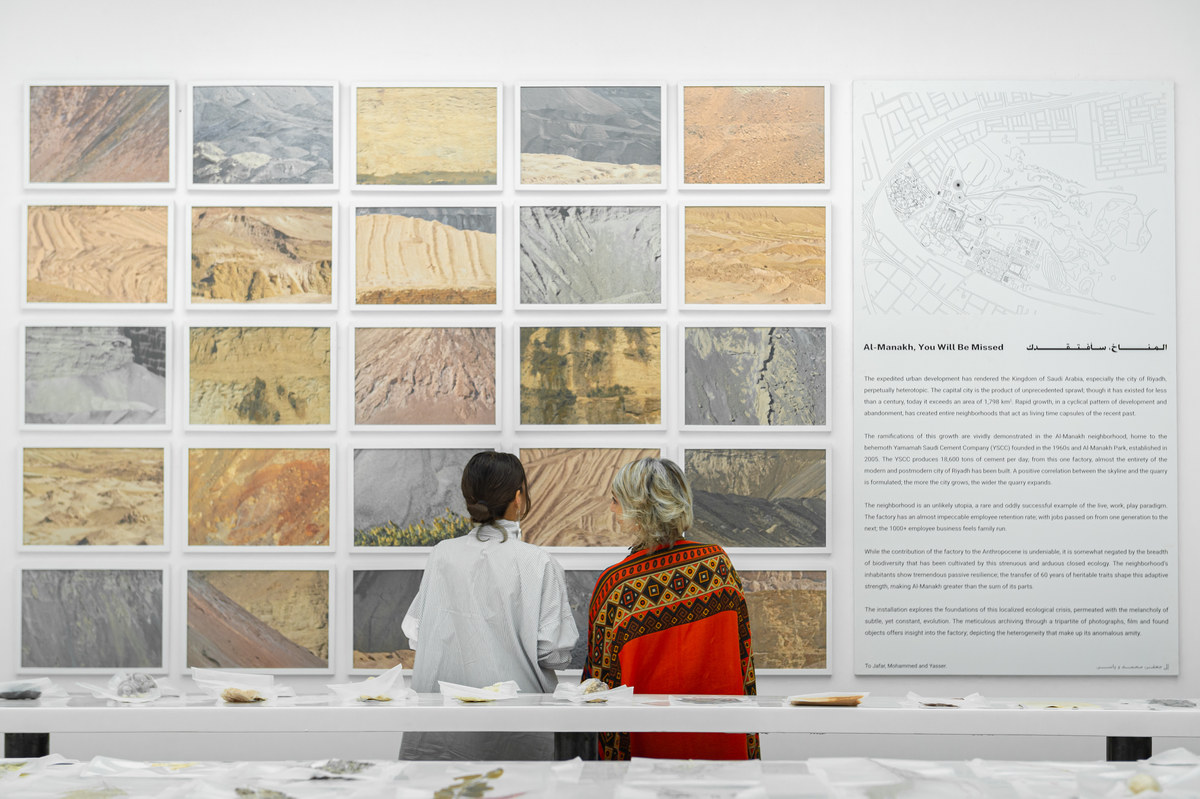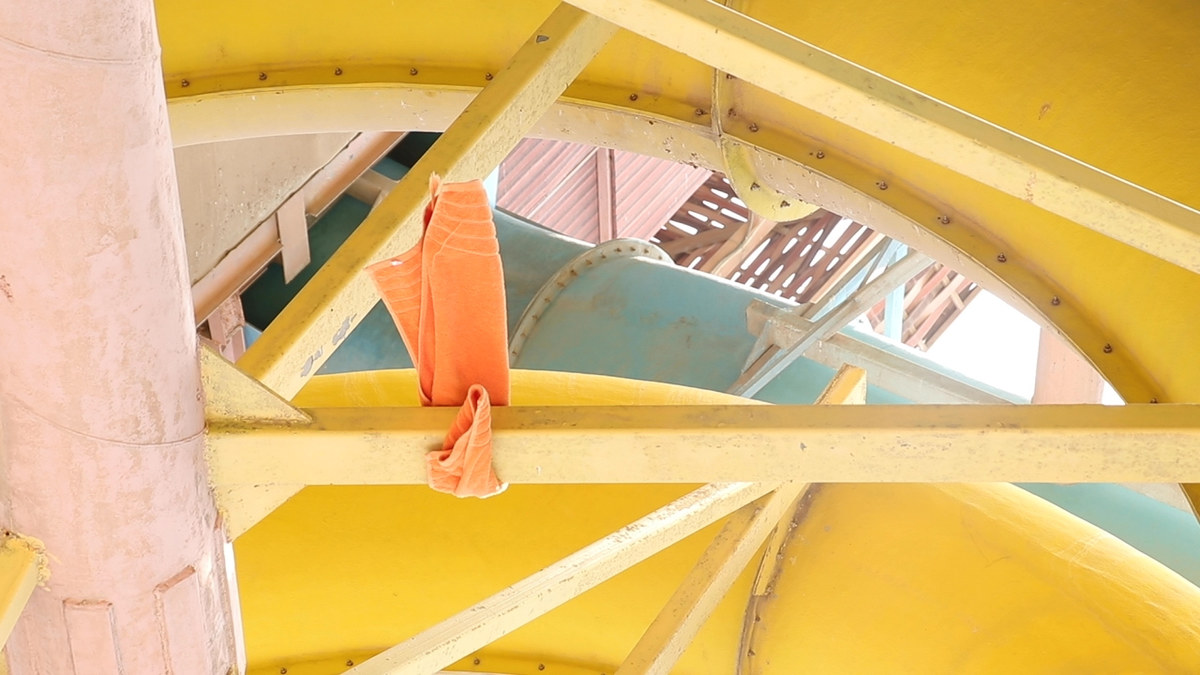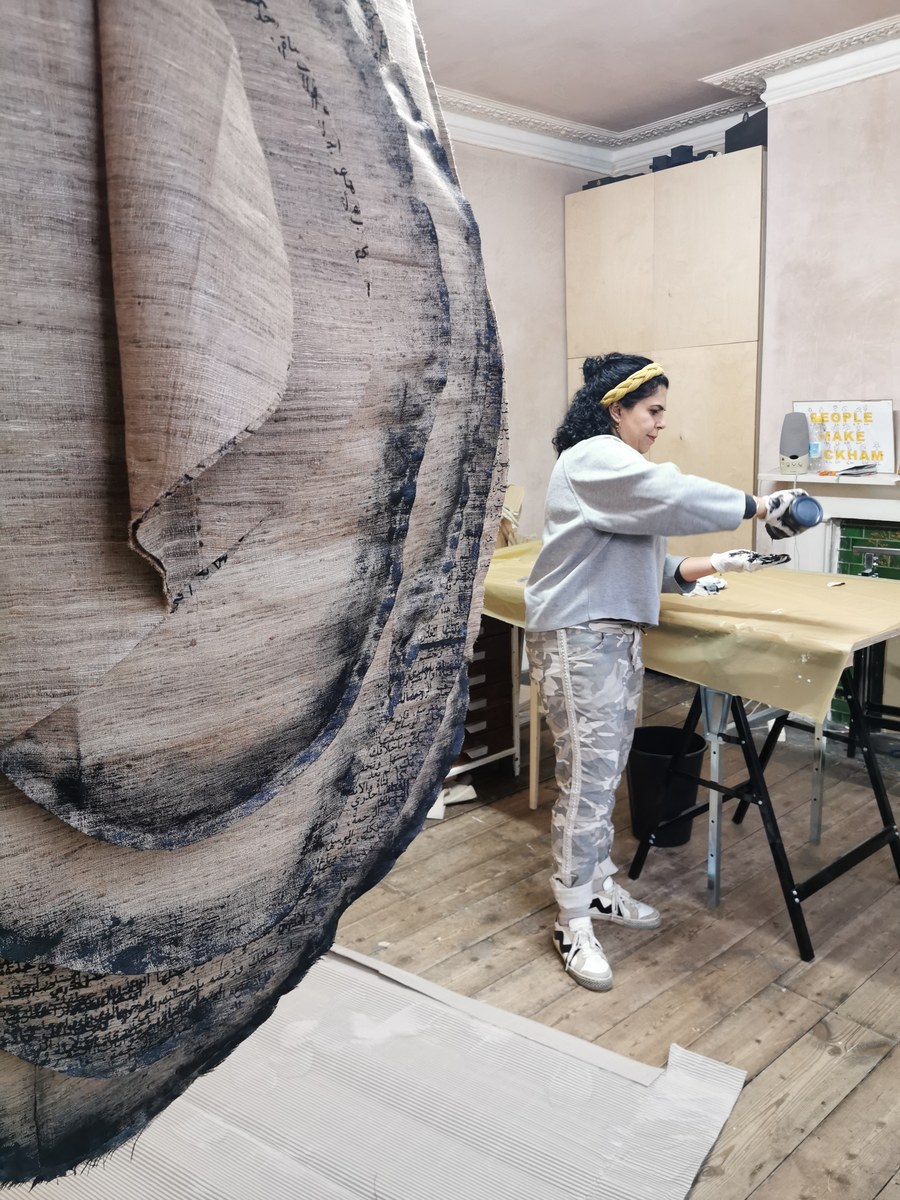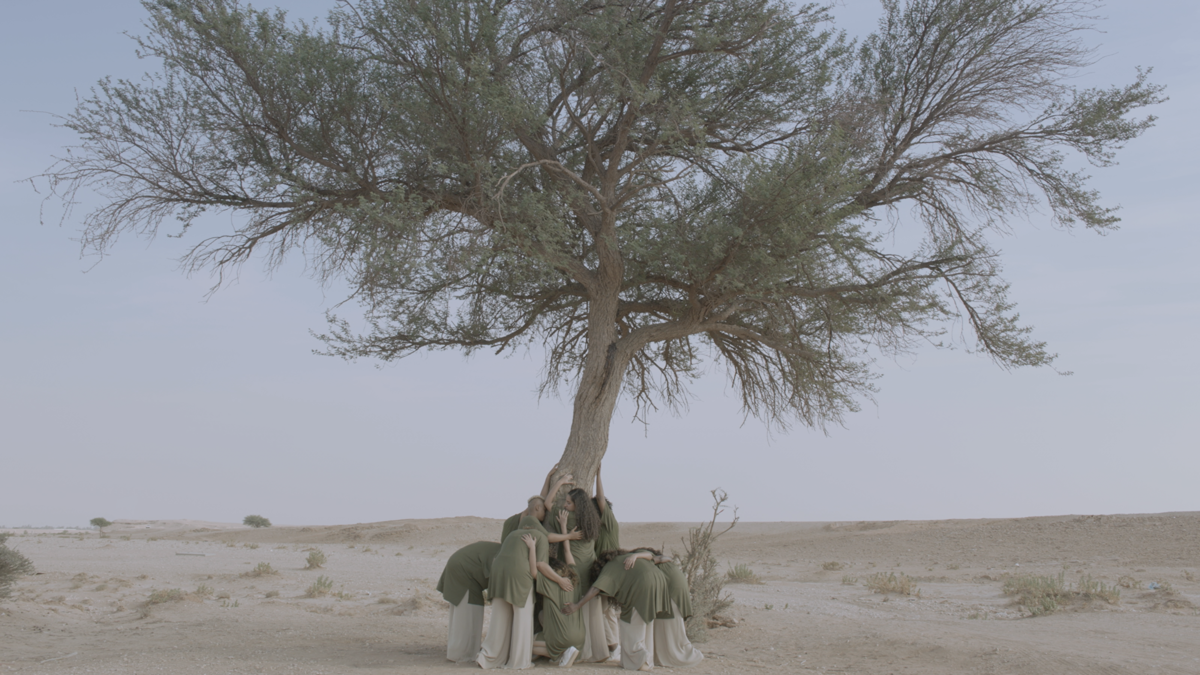Saudi fine jewelry label spotlights Amina Khalil
JEDDAH: Journey down the winding streets of Jeddah’s historic Al-Balad district and you’ll reach one of the many UNESCO-protected traditional homes that proliferate the area. Step inside and you’ll come into contact with something you didn’t expect: Several video works and installations that explore environmental crises in Saudi Arabia and worldwide.
This is “I Love You, Urgently,” the main show of the seventh edition of ‘21’39 Jeddah Arts, which runs until April 18. Curated by Maya El-Khalil, it focuses on the global crisis of our planet through works by 21 local and international artists.
In one room a slide projector plays views of candy-colored water parks in the Eastern Province and Riyadh. While guests quickly become enamored with the photographs and the delectable aesthetic of the many slides and structures in the park, they’ll be puzzled by one aspect: There are no people in the images.

In an installation called “Al-Manakh, You Will Be Missed” (2019), by Saudi artists Alaa Tarabzouni and Fahad bin Naif chart the story of the Yamamah cement factory. (Supplied)
The installation — “1056%” — created this year by Aziz Jamal, an artist from the Eastern Province, documents how the elaborate and vibrant infrastructure of these abandoned water parks is now rendered purposeless. How? These desolate scenes scream of Saudi Arabia’s silent crisis: The country has used 1056% of its total renewable water sources, far exceeding the conservative global water-scarcity threshold of 20-40%. It has water debt.
As the Kingdom continues its rapid development — with buildings such as Jeddah Tower, which will stand 3,280-feet-tall (making it the tallest building in the world) when it opens later this year — the question of how the country will grapple with the water emergency threatening the desert landscape remains. Through his work, Jamal addresses this concern.

The installation — “1056%” — is created this year by Aziz Jamal. (Supplied)
“Participating in ‘I Love You, Urgently’ has proven to me that connectivity is in full effect when it comes to our relationship to our bodies and our environment,” says Jamal. “In a subject like the water crisis, the issue ripples into every crevice of our life and is at the core of our future in nearly every aspect.”
Elsewhere in the show, works by regional artists — which take the form of video, sculpture and installations — draw inspiration from the work of the award-winning German architect Frei Otto, who is the subject of a special exhibition in the show. Otto built a number of projects in Saudi Arabia during the 1970s and 1980s and was known for his willingness to experiment — drawing from the fields of biology and art for his structures.
“This exhibition is inspired by the legacy of Otto,” El-Khalil, the curator, tells Arab News. “The works created are personal statements by the artists. We are at a point now when Saudi Arabia is going through so much change and with so many projects being announced, I thought it would be interesting to present this alternative voice that has built substantial structures in the Kingdom.”
El-Khalil presented a brief to the selected artists, asking them to explore the concepts of biomimicry — an approach that seeks nature-inspired solutions for a healthy planet; adaptability; and the idea of specificity from a local viewpoint.

Manal Al-Dowayan’s “Ephemeral Witness” (2020) tells of another kind of urgency: The changing status of women as they enter the public sphere of Saudi society. (Supplied)
The works on show in “I Love You, Urgently” illustrate the personal nature of the ongoing environmental crisis. In an installation called “Al-Manakh, You Will Be Missed” (2019), Saudi artists Alaa Tarabzouni and Fahad bin Naif chart the story of the Yamamah cement factory, built in the 1960s in the Al-Manakh neighbourhood of Riyadh. Producing 18,600 tons of cement per day, the factory is, almost single-handedly, responsible for the construction of the modern-day capital city. Now, though, it is on the verge of closure and the two architects used this work to contemplate the ramifications of its disappearance; the localized ecological crisis it has created by its presence; and what will happen to the community of workers who have worked —generation after generation — at the factory and will now need to go elsewhere.
“I want this artwork to become a dialogue starter for changes in legislation and on the growth and deterioration of the environment,” bin Naif tells Arab News. “The environment is urgent and this relates to the theme (of the show). There’s an emotional urgency now to save the environment.”
In a large-scale 11-minute video called “I Lived Once” (2020) by Riyadh-based artist Marwah Al-Mugait, a powerful group of performers move and chant, recalling the reactive, unconscious defense mechanisms of organisms in danger. “My collaborators and I came out of this project with different realizations about how precious this environment is, and how it has been giving to us unconditionally,” says Al-Mugait. “There was beauty in how we collectively felt connected to nature and our environment with our movements.”

The large-scale 11-minute video called “I Lived Once” (2020) is by Riyadh-based artist Marwah Al-Mugait. (Supplied)
Other works on view ponder the rate of change taking place in the Kingdom. Saudi artist Manal Al-Dowayan’s “Ephemeral Witness” (2020) tells of another kind of urgency: The changing status of women as they enter the public sphere of Saudi society. The work — a large recreation of a desert rose made in natural silk, ink and rope — hangs from the ceiling of one room of the Gold Moor Mall, another location of ‘21’39. The desert rose, Al-Dowayan says, was always portrayed as a beautiful mystery. Here, she uses it as a metaphor for what she calls an “ephemeral witness to time” — words used by geologists to describe rare crystals. Her work, like its name, is a witness to the Kingdom’s rapid development, its effects on the environment and on women — Al-Dowayan cites a 2019 report from CommsMEA, which says women’s participation in the workplace in Saudi Arabia rose from 3 percent to 20 percent in a little over a decade.
The effects of the shift are both behavioral and social. They also change the nature of shared physical space. Al-Dowayan seems to ask: How does one reconcile with the past as we accelerate into the future and a new society?
The same goes for the environment. “The emergency situation we face today cannot be handled by one group,” she says. “Artists and their spaces of activity must participate in addressing the impending danger facing us and our future.”